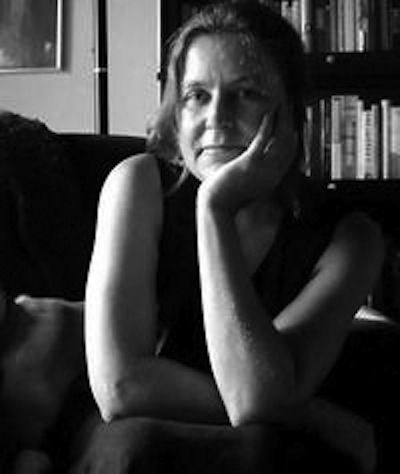Karen Joy Fowler
(PM Press)

Finally, at twenty-seven, she "had saved enough money to buy a shop with a glass display window in the front. She named it Anning's Fossil Depot."
Ultimately, scientists came from all over the continent to buy her artifacts, including King Frederick Augustus II of Saxony. His physician wrote of her and her shop,
- We had alighted from the carriage and were proceeding on foot, when we fell in with a shop in which the most remarkable petrifications and fossil remains --- the head of an Ichthyosaurus, beautiful ammonites, etc. --- were exhibited in the window.
One of her visitors was a professor from Oxford, William Buckland. He was a bit of an eccentric, for "He had vowed to eat his way through the animal kingdom and was infamous for serving mice on toast to unsuspecting guests."
- The bluebottle fly, he said, was the worst-tasting animal he'd found.
Mary was a romantic, and turned out to be most knowledgeable about the fossils she had uncovered. She educated herself about her finds, became a self-taught expert there in the dark wastes of the early 19th Century. She could easily have been a member of the Geological Society of London, but, as a woman, and this being the 1840s, she was denied that opportunity.
Several members of the GSL even accused her of fraud, but it was her drawings, expertly rendered, that saved her reputation ... and her livelihood.
It is obvious that author Karen Joy Fowler has much affection for this penniless, self-taught genius. She also has sympathy for mother-son madness, as told in "The Further Adventures of the Invisible Man." And even for rebellious teenage girls. There is evidently a trend now for families to ship angry youngsters off to other countries to suffer through a siege of "tough love" ... which is supposed to straightened them out.
The girl Norah appears here in "The Pelican Bar." Fowler reveals that after being kidnapped (with the assistance of her family), she went through a year of deprivation, isolation, and verbal whippings (along with being tied face-down on cement floors for hours at a time) to get her to conform.
Fowler adds further detail of this torture in an interview that crops up half-way through The Science of Herself.
Q: The Pelican Bar is pretty scary. Where'd that idea come from? Quantánamo?
A: Definitely Quantánamo. Also Abu Ghraib. But even more directly, from the chain of overseas schools run by the World Wide Association of Speciality Programs and Schools ... I read online a statement that we shouldn't be surprised that Americans are OK with torturing foreign prisoners, because apparently we are OK with the torturing of American children, as long as it happens overseas. That statement was the seed of my story.
Q: If you weren't a writer what would you be, as in do?
A: I would go on anthropological digs and find amazing pottery shards. I would study cave paintings and also elephants in the wild. I would restore old books, damaged by weather and fire. I would sail around the world. I would be such a valuable member of society that you would hardly recognize me.
(The questioner here, Terry Bisson, should get a few points for her inventive questions.)
Q. Who do you think would win in a fight, Dr. Johnson or Jane Austen? A footrace?
A. Austen would refuse to compete. Johnson would win, but he would look such a fool for having done so.
And then there's this response to "Is it true that Sarah Canary was originally titled Sister from Another Planet?
A. Something should be titled Sister from Another Planet. It would be nice if I didn't have to write it myself, but I am here, waiting and eager to read it. Doesn't this seem like a job for Eleanor Aranson? I think she might be just the woman for it. I would read Sister from Another Planet by Eleanor Aranson in a heartbeat.
Fowler is so much fun that we want to ring her up and ask her a few questions ourselves ... like where did she learn to write such scary stories as "The Pelican Bar," in which poor Norah, who, for months and months, has been cursed, spat on, insulted, browbeaten and tortured so that when she is finally set free, she thinks: "Mama Strong had said that Norah would have to change, but Norah felt that she'd vanished instead. She didn't know who she was anymore. She didn't know anything at all."
When Fowler is asked whether she reads "on the Kindle," she gives the answer that so many of the rest of us have in our head, but just didn't know how to formulate:
- I persist on liking books on paper best. I've learned that the sense of how close to the end of a book I am, which no electronic version can recreate for me in quite the same physical way, is an important component of my reading experience.